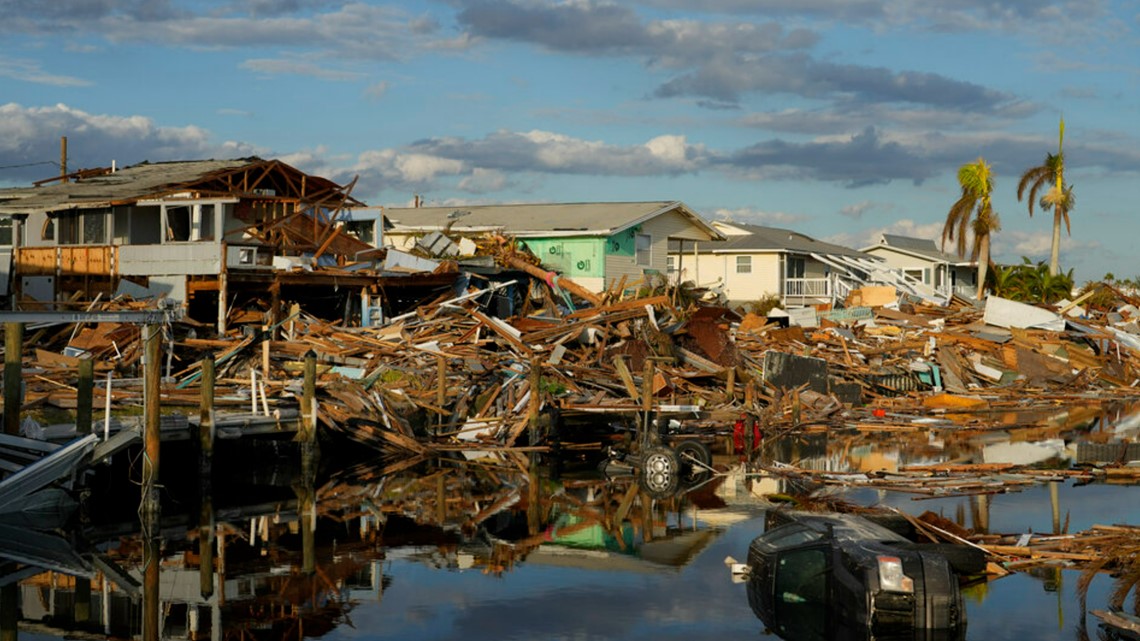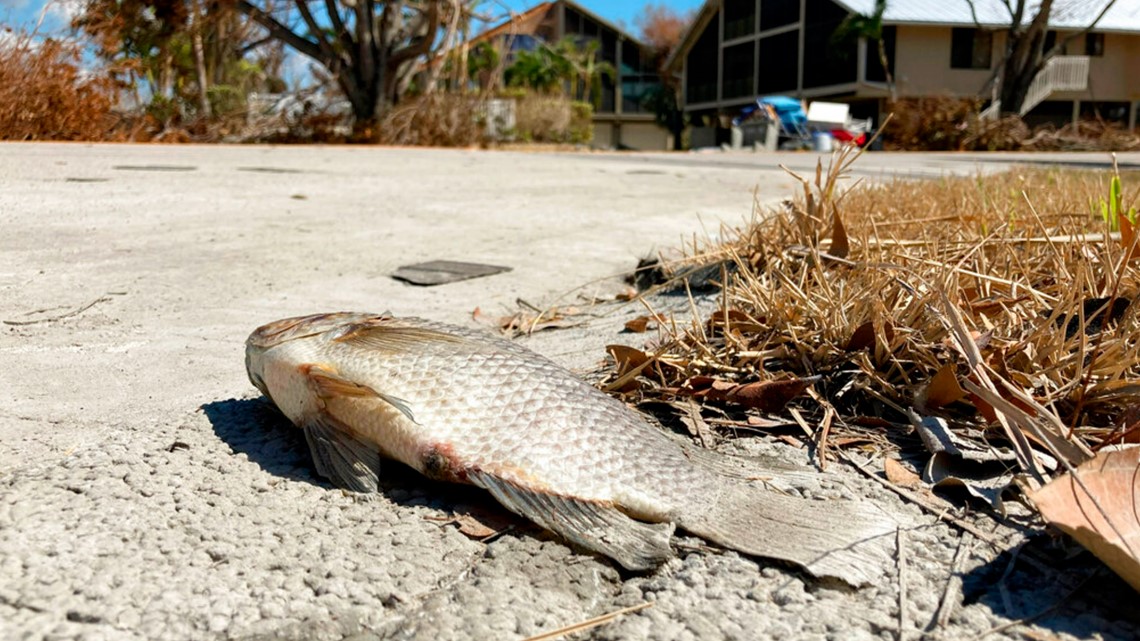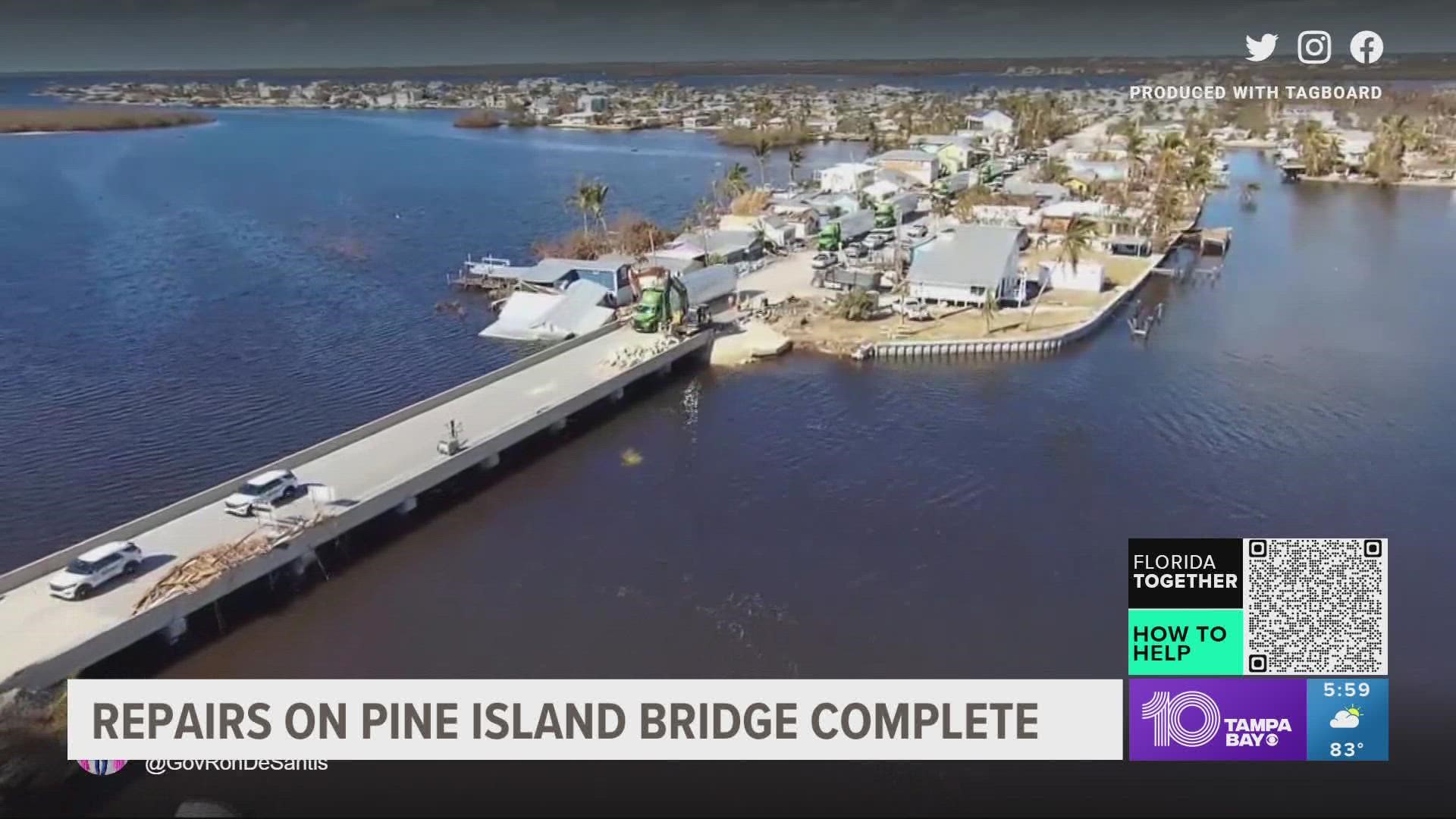SANIBEL, Fla. — Rotting fish and garbage lie scattered in Sanibel Island's streets. On the mainland, debris from washed-away homes is heaped in a canal like matchsticks. Huge shrimp boats sit perched amid the remains of a mobile home park.
“Think of a snow globe. Pick it up and shake it — that’s what happened,” said Fred Szott.
For the past three days, he and his wife Joyce have been making trips to their damaged mobile home in Fort Myers, cleaning up after Hurricane Ian slammed into Florida's Gulf Coast.
As for the emotional turbulence, he says: “You either hold on, or you lose it.”
Just offshore, residents of Florida's devastated barrier islands are also returning to assess the damage to homes and businesses, despite limited access to some areas.


The broken causeway to Sanibel Island might not be passable until the end of the month. In the meantime, residents like Pamela Brislin arrived by boat to see what they could salvage.
Brislin stayed through the storm, but is haunted by what happened afterward. When she checked on a neighbor, she found the woman crying. Her husband had passed away, his body laid out on a picnic table until help could arrive. Another neighbor's house caught fire. The flames were so large that they forced Breslin to do what the hurricane could not — flee with her husband and a neighbor's dog.
The number of storm-related deaths rose to at least 101 on Thursday, eight days after the storm made landfall in southwest Florida. According to reports from the Florida Medical Examiners Commission, 98 of those deaths were in Florida. Five people were also killed in North Carolina, three in Cuba and one in Virginia.
Ian is the second-deadliest storm to hit the mainland U.S. in the 21st century behind Hurricane Katrina, which left more than 1,800 people dead in 2005. The deadliest hurricane ever to hit the U.S. was the Great Galveston Hurricane in 1900 that killed as many as 8,000 people.


Ian, a Category 4 storm with sustained winds of 150 miles per hour (240 kilometers per hour), unleashed torrents of rain and caused extensive flooding and damage. The deluge turned streets into gushing rivers. Backyard waterways overflowed into neighborhoods, sometimes by more than a dozen feet (3.5 meters), tossing boats onto yards and roadways. Beaches disappeared, as ocean surges pushed shorelines far inland.
Sanibel Island had ordered a complete curfew after the storm passed, allowing search and rescue teams to do their work. That meant residents who evacuated the island were technically blocked from returning.
But the city of about 7,000 started allowing residents back from 7 a.m. to 7 p.m. on Wednesday. City manager Dana Souza told residents in a Facebook Live stream that he wished the municipality had resources to provide transportation but that, for now, residents would have to arrange visits by private boat.
Pine Island is closer to the mainland than Sanibel, but it too was hit hard by the storm.
Cindy Bickford's house was still standing. Much of the damage was from the flooding, which left a thick layer of rancid muck on her floors.


“It’s not our stuff we’re worried about. It’s our community. Pine Island is extremely close-knit,” said Bickford, who arrived Thursday for the first time.
She was hopeful that much could be salvaged.
“We’ll tear the home apart so we can live in it,” said Bickford, who wore a T-shirt that said “Relax,” “Refresh” and “Renew.”
The storm caused billions of dollars in damage and killed dozens of people, the majority of victims in Florida. Even a week after it passed through, officials warn that more dead could still be found as they continued to inspect the damage.
Florida Gov. Ron DeSantis, at a news conference Thursday in the Sarasota County town of Nokomis, trumpeted the widespread restoration of running water through the storm-hit zone and the work toward restoring power. Some 185,000 customers remain without electricity, down from highs above 2.6 million across the state.
He said rescue workers have conducted around 2,500 missions, particularly on barrier islands on the Gulf coast as well as in inland areas that have seen intense flooding. More than 90,000 structures have been inspected and checked for survivors, he said.
He said residents areas devastated by the hurricane had been showing great resilience over the past week.
President Joe Biden toured some of Florida’s hurricane-hit areas on Wednesday, surveying damage by helicopter and then walking on foot alongside DeSantis. The Democratic president and Republican governor pledged to put political rivalries aside to help rebuild homes, businesses and lives. Biden emphasized at a briefing with local officials that the effort could take years.

